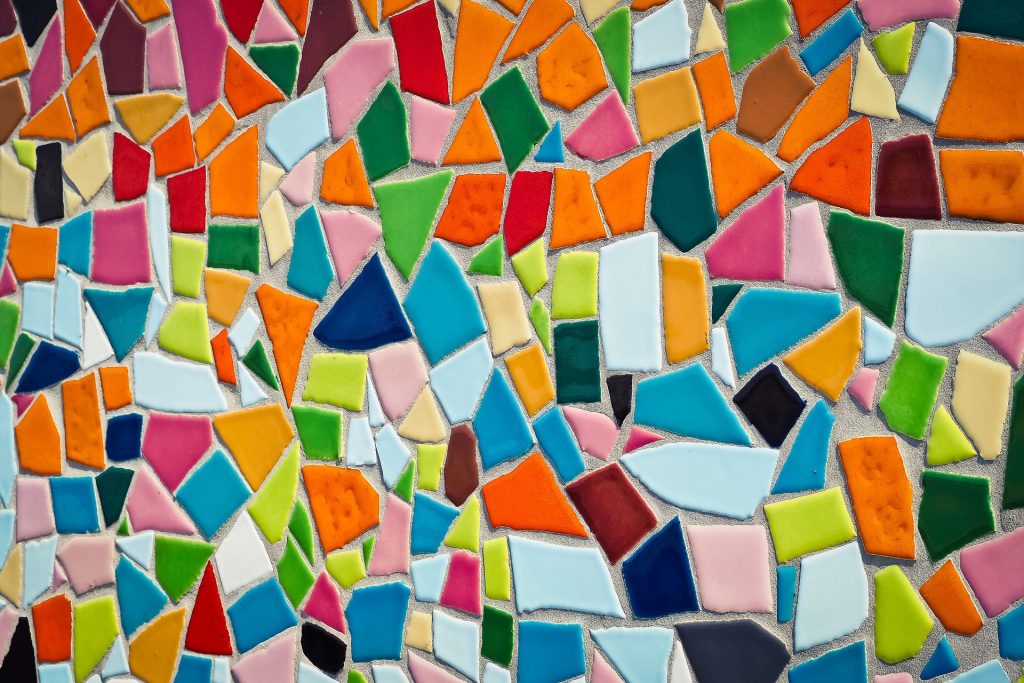Tiles made from ceramic or porcelain

Tile Materials: Types and Uses
It has been an important design material since ancient Roman times. While man-made materials have become equally popular, tile is still respected for its beauty and cost-saving potential. Tile is composed of four main types: ceramic/porcelain, glass, quarry, and stone
When we mention tile as a cost-effective material, we’re referring to ceramic tile. Ceramic tile is best for surfacing and comes in virtually unlimited style options. Despite the fact that ceramic tile is not always affordable, there are bargain ceramic tiles that add beauty to your home.
A clay mixture of shale, gypsum, and sand, known as bisque, is worked into tiles that are fired up to 2500 degrees Fahrenheit. Tiles become stronger at higher temperatures. A glaze must be applied, then the tile must be fired again to harden the glaze. Sometimes the glaze is applied prior to the tile being fired for the first time. Ceramic tiles are porous by nature. They must be coated with a glaze and then fired again to harden the glaze.
Apart from minimising the costs, one of the major benefits of ceramic tile is that it can be made into an unlimited number of colors and shapes by hand because it is handmade. PTCA certifies porcelain ceramic tiles and distinguishes between those that are porcelain and those that are not. PTCA standards for porcelain stipulate that it must meet ASTM C373, a higher water absorption standard than other ceramics. As such, porcelain is preferred in the presence of high moisture areas such as bathrooms and showers.
Glass Tile
The tile of choice for vertical surfaces that demand attention, glass mosaic remains as a popular choice for creating showy, flashy, and fun surfaces.
As glass tiles crack under pressure, glass mosaic should not be installed on floors. Glass tile backsplashes are common in kitchens and bathrooms.
The mosaic glass tile has a lustrous beauty that cannot be matched by any other type of tile material. Most of the mosaic glass tiles are attached to a web backing, so you can install one square foot at a time.
Quarry Tile
Traditionally, quarry tile was made from quarries. Like the pictures of Vermont quarries you see in old pictures, the tiles were cut, ground, and polished. Nowadays, however, the ceramic tiles are made using an extrusion method that makes them almost as hard as natural stone.
Because quarry tile’s surface is rough, it makes it perfect for flooring because it provides a good grip, but it is very porous, so it is not appropriate for kitchen countertops. However, even when sealed, quarry tile cannot be used as a food prep surface.
Tiles Made Of Natural Stone
Stone tile makes a great choice for kitchens or bathrooms because it is durable and visually appealing, and it holds its value over a long period of time.
It is not without its flaws. Although stone is tough and durable, it is susceptible to cracking if the wrong object is dropped at just the right angle. In addition, granite and marble are porous, so they have to be sealed and polished on a regular basis. They are also not suited to high temperatures, such as those generated by hot pots.
However, the rich and vivid colors of natural stone cannot be duplicated by ceramic tile. Natural stone provides an endless supply of interior design inspiration. Although natural stone has its shortcomings, it still makes a good design statement.When natural stone is used in bathrooms, it can be cold to the touch under bare feet. This is why radiant heating mats should be installed under the stone.
